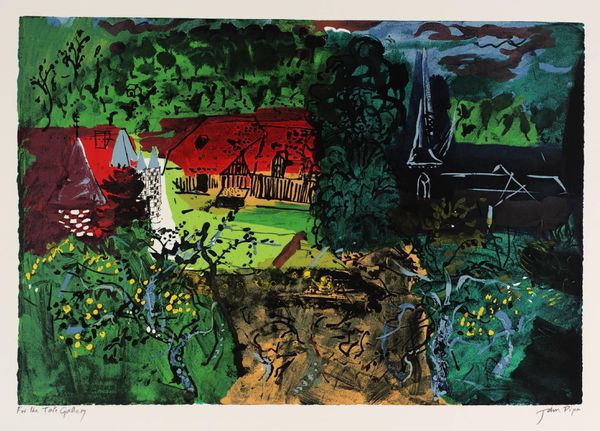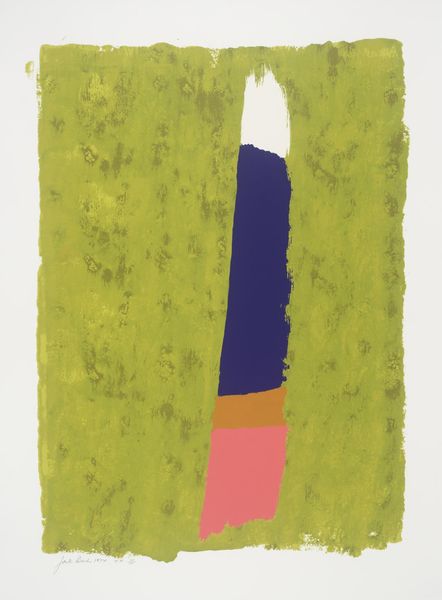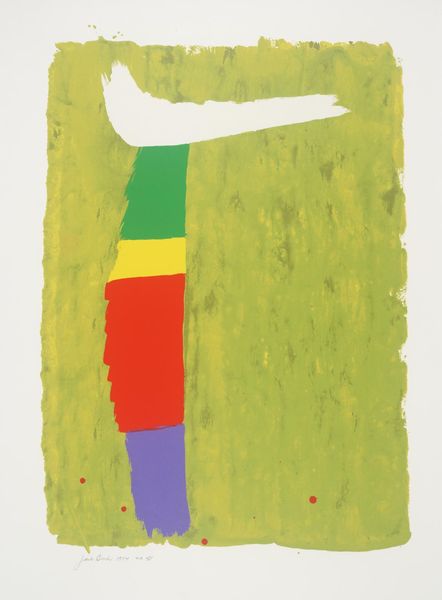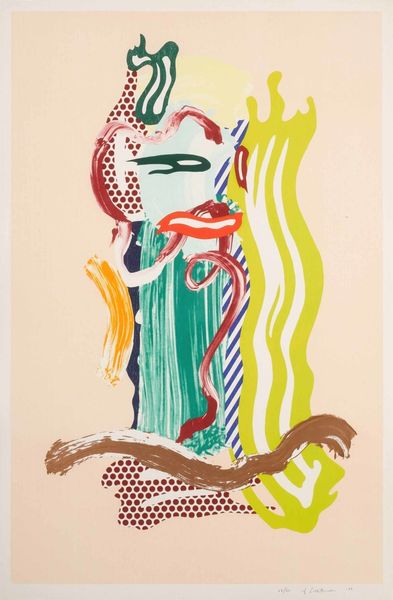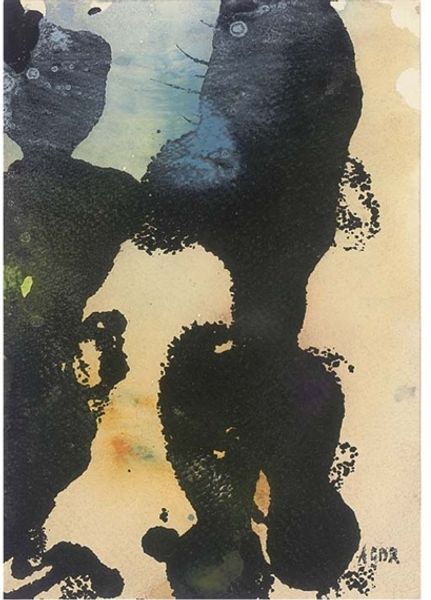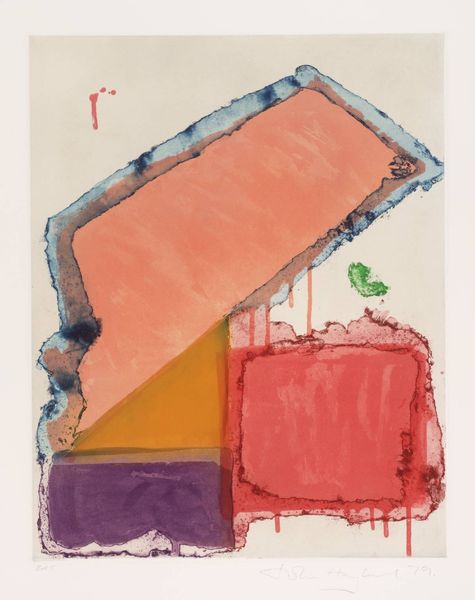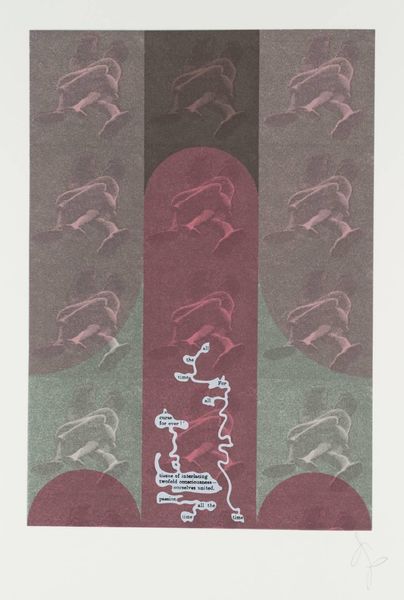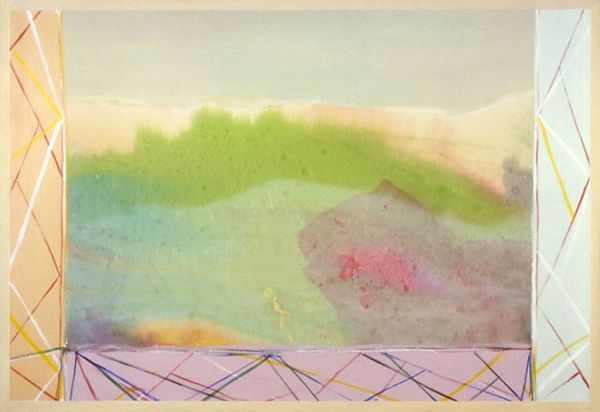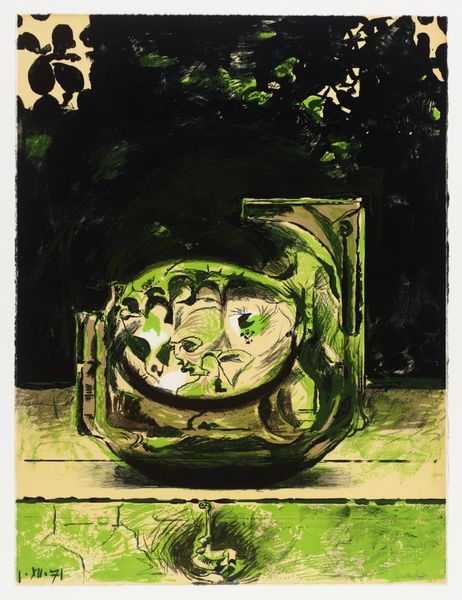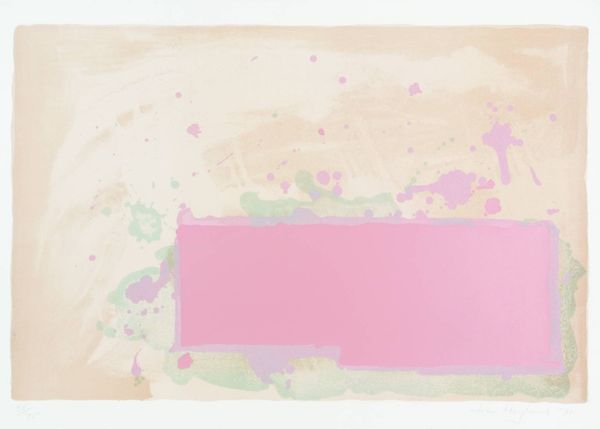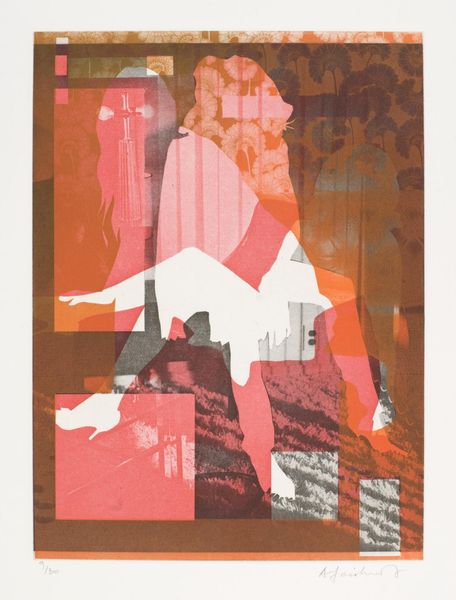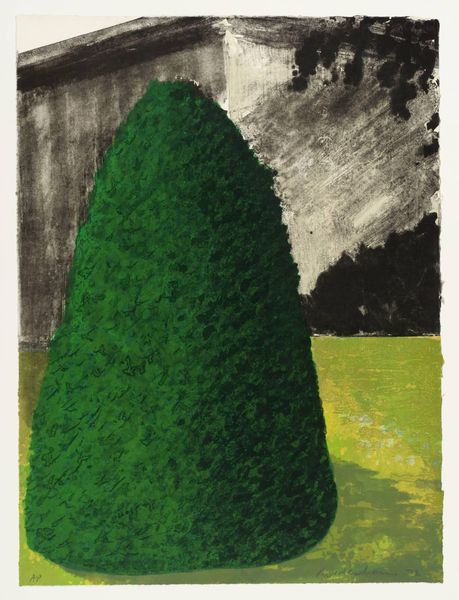
Dimensions: image: 491 x 362 mm
Copyright: © The estate of Graham Sutherland | CC-BY-NC-ND 4.0 DEED, Photo: Tate
Editor: Graham Sutherland’s print, "4. The Snake," presents a somewhat surreal landscape, dominated by a large serpent. Its scale feels almost symbolic. What historical or cultural contexts might illuminate this piece? Curator: Well, the serpent is a potent symbol, particularly in Western art. Think about its complex representation as both a figure of temptation and knowledge in religious narratives, and how patriarchal structures have often framed it negatively. Sutherland, working in the mid-20th century, might be engaging with these long-standing associations, perhaps questioning them. What do you make of the figures in the background? Editor: They seem somewhat trapped or confined. Is Sutherland perhaps using the snake to represent a force of liberation? Curator: Precisely! We might interpret the snake as a catalyst for change, challenging established power dynamics. Considering Sutherland's context, post-war anxieties and evolving social norms might be at play here. It encourages a fascinating dialogue about liberation, fear, and the subversion of traditional roles. Editor: That adds a whole new layer of understanding! Thanks for sharing your insight.
